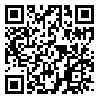BibTeX | RIS | EndNote | Medlars | ProCite | Reference Manager | RefWorks
Send citation to:
URL: http://tumj.tums.ac.ir/article-1-688-en.html
Background: Nasogastric tube (NG tube) usage was first described in 1921 by Levin. Surgeons routinely use NG tube in most esophageal resections. Considering the numerous complications caused by this tube, the uncertainty about its usefulness and the scarcity of studies conducted on the subject, particularly in esophageal cancer patients, we investigated the necessity of the NG tube in these cases.
Methods: This clinical trial was performed at the Cancer Institute of Imam Khomeini Hospital. Esophageal cancer patients were randomized into groups either with or without postoperative NG tube the latter group was also prescribed metoclopramide. Postoperative obstruction was the exclusion criteria. The operation was done by a team of surgeons using the surgical techniques of McKeown or Orringer. All patients received ranitidine, heparin and antibiotics postoperatively. All patients received postoperative chest X-ray and chest physiotherapy. The NG tube was inserted or reinserted for those with abdominal distention and/or repeated vomiting. The NG tube was pulled out after return of bowel movements. The variables recorded for each patient included the first day of flatus, the first day of defecation, the first day of bowel sound (BS) upon auscultation, duration of post-operative hospitalization, nausea and vomiting, abdominal distension, pulmonary complications, wound complications, anastomotic leakage and the need for placing/replacing the NG tube. Statistical analysis was performed using SPSS, v. 11.5.
Results: After randomization, the NG tube was inserted for 22 patients, and 18 patients had no NG tube. The incidence of anastomotic leakage was significantly higher in the NG-tube group. No significant differences between the two groups were found for other complications. The mean times until first passage of flatus, defecation and BS upon auscultation and the duration of post-operative hospitalization were not significantly different. The need for placing/replacing the NG tube was the same for both groups. There was no difference in the perioperative death rates between the two groups.
Conclusions: We conclude that the routine use of NG tubes after surgery is not recommended for all patients. NG tube should be used according to the specific needs of each patient. This protocol will protect patients from undesired complications.
| Rights and permissions | |
 |
This work is licensed under a Creative Commons Attribution-NonCommercial 4.0 International License. |





